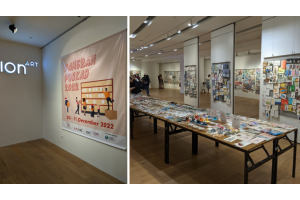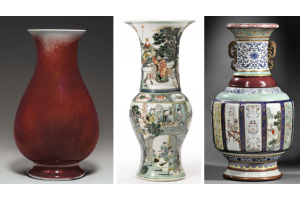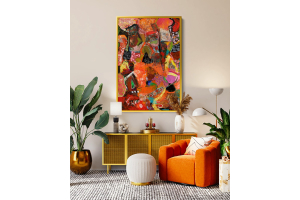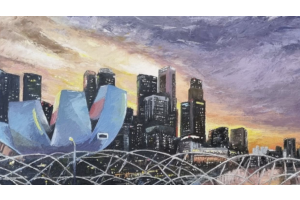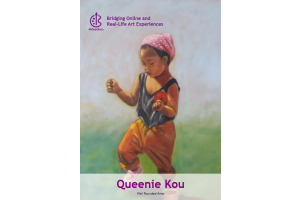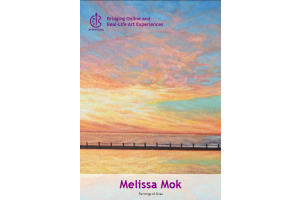Navigating the Creative Journey: Understanding the Struggles of Local Artists
-
March 06, 2024
Trends

By : Jackie Guo
20 Jan 2024
Despite its global acclaim for economic success and urban splendor, Singapore harbors a hidden gem often overshadowed by its towering skylines and bustling streets: the local art scene. To the average person, it may appear robust, manifesting everywhere in the form of street art, sculptures in MRT stations, or occasional art festivals, just to name a few. However, it remains a stark reality that many local artists struggle to break into the Singapore art scene.
Despite our society’s increasingly accepting perspective to the arts, much is left to be done. Community support and participation is more important than ever in building up the local art landscape.
Understanding Local Art
Art in Singapore can be described as a vibrant amalgamation of representations. This can be due to the diverse cultures, backgrounds and perspectives of local artists, which is also what makes Singaporean art so different and unique. Pioneering local artists even founded a modern art movement in the late 1940s, the Nanyang style, striving to bring art discourse to the community. Works from this period are still some of the most prominent and well-known in the art scene today, easily recognised by its distinct style and subject matter.

Georgette Chen Boats and Shophouses
https://www.sothebys.com/en/articles/georgette-chens-singapore-a-true-paradise-for-the-artist
As the times progressed, so did local art. Experimentations with different mediums, concepts and technology came about, as more sculptures, installations, and digital art emerged.
Over time, there is much progress in the local art scene, and slowly, mindsets surrounding art are changing. Gone are the times when art was looked down upon and strictly regulated, the community and government are now embracing it as part of Singapore’s culture and education. With the increase in funding, art events, public art institutions and exhibitions, art has become a norm, a familiar scenery against the city skyline.
The Struggles
Despite the improving circumstances for artists in Singapore, there are two major difficulties that local artists face.
Firstly, financial instability. The material value art brings about is very much dependent on its reception with the audience, which makes it volatile and unstable. This is also the underlying reason why art is still viewed as the less desired career path, a backup plan, a courageous yet unwise move. This deeply ingrained stigma is further perpetrated by societal beliefs, such as a
practical and conservative mindset. In the local art market now, the majority of patrons and buyers are from overseas. Although it reflects how much Singapore art is appreciated by foreigners, it also creates a bleak comparison with the less enthusiastic local reception. The sentiment of art merely adding superficial, decorative value to a space is shared prevalently in the more practical minds of Singaporeans, who are then less likely to spend money acquiring it.

https://www.timeout.com/singapore/art/the-ultimate-guide-to-singapore-art-week-2019
Secondly, the lack of exposure. Singapore is a small country, and when it comes to art, where exposure and opportunities are major players in achieving success, there may be a lack of resources. The type of art taught in institutions and displayed in public are regulated, to avoid controversy. For example, public art must abide by the Arts Entertainment Classification Code, which considers topics like language, race, social norms, and mature content. The approval process may also be long and tedious. This may be discouraging for some artists, deterring them from fully expressing themselves. Hence many artists opted to pursue a career in other countries, and immerse in the more avant-garde scene overseas.
Benefits of Supporting Local Artists

https://www.littledayout.com/chinatown-murals-singapores-heritage-in-street-art/
In supporting local artists, we support our culture, our ideas, our diversity, and our creativity. Local art often reflects the traditions and experiences of their communities. It acts as a preservation of history and heritage, a way to commemorate our pasts in the future. It also goes unsaid that a flourishing local art scene will promote tourism and exchanges with foreign artists, opening doors and bringing about more opportunities.
Practical Ways
That being said, here are some ways everyone can play a part in supporting local artists.
1. Attend local events

Singapore Art Week 2024
(https://www.visitsingapore.com/festivals-events-singapore/annual-highlights/singapore-art-week/)
Festivals like Singapore Art Week and I-Light Singapore are wonderful opportunities for you to get acquainted with local art. With many free exhibitions and gallery walks, works from a huge catalog of artists from various backgrounds are showcased. Art is made more accessible for the general public, who can now easily show their unwavering support for local artists by the simple act of viewing their art.
2. Support artists digitally

https://www.socialpilot.co/blog/social-media-for-artists
With the prevalence of social media and rise in digital marketing, many artists took to platforms like Instagram and TikTok to start off their careers. This creates a low cost, convenient way for them to increase their outreach. From the comfort of our own homes, we can show our support by the simple act of following the artists. The amount of followers directly correlates to the patronage, which is why it is so important for artists, especially emerging ones. In addition, we can also interact with their posts, for example liking, sharing and commenting. A few clicks of buttons from us can make a huge difference for artists.
3. Purchasing local art

Affordable Art Fair
One of the most direct ways of showing your support would be to purchase from local artists. This can be done on a plethora of platforms, ranging from physical art fairs and markets, to various e-commerce sites, like MeetArts. The process of buying art is now made simpler and more convenient than ever.
Conclusion
The responsibility of conservation and support of the local art scene lies with not only artists, but each of us. Fostering a thriving and dynamic art environment can now be achieved through simple acts of appreciation and participation. By encouraging a culture of acceptance, support and investment in our homegrown talent, we can collectively contribute to the enrichment of our cultural identity, and ensure that Singapore's artistic legacy continues to thrive for generations to come.
References:
- https://www.channelnewsasia.com/singapore/growing-global-demand-works-singaporean-artists-more-needs-be-done-draw-youngsters-art-sector-nafa-lasalle-3654826
- https://www.nac.gov.sg/resources/toolkits-and-guides/arts-self-employed-persons-(seps)-and-fre elancers/event-licensing
- https://www.artsy.net/article/artsy-editorial-singapore-major-global-art-hub
- https://thesmartlocal.com/read/arts-scene/ https://mustsharenews.com/singapore-arts-scene/ https://mosg.tv/2018/04/26/problem-singapores-art-scene/
- https://www.timeout.com/singapore/art/minimalist-or-minimal-is-the-arts-scene-in-singapore-plai n-boring
- https://www.tatlerasia.com/lifestyle/arts/street-artists-to-see-singapore-2022


 PREVIOUS ARTICLE
PREVIOUS ARTICLE 

